Acamptopappus sphaerocephalus, Rayless Goldenhead
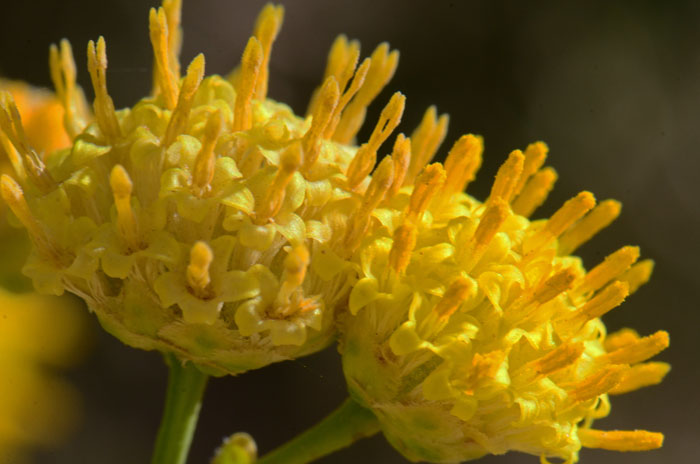
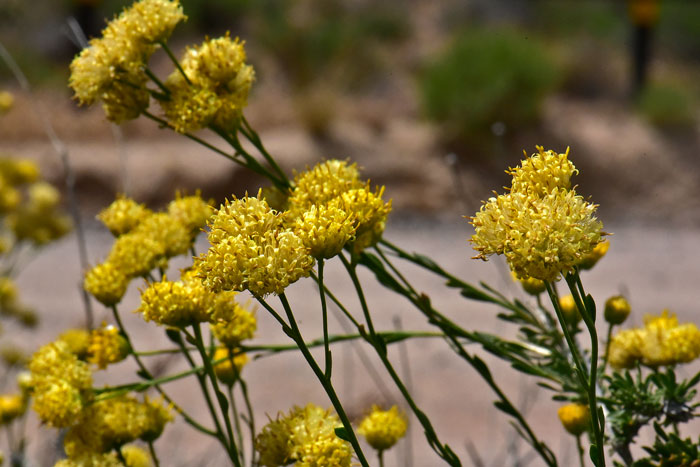
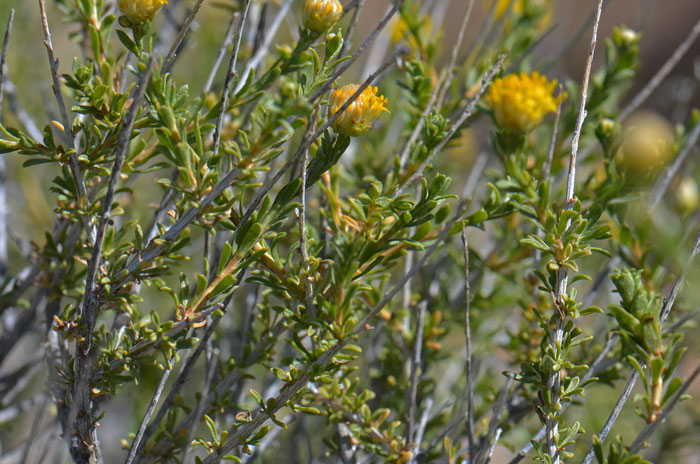
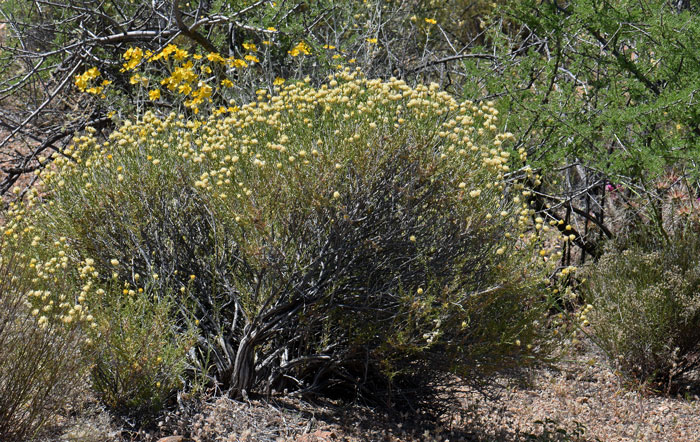
Common Name: Rayless Goldenhead
Also Called: Goldenhead
Family: Asteraceae, Sunflower Family
Synonyms: ()
Status: Native
Duration: Perennial from a taproot.
Size: Usually less than 3 feet (1 m) tall; generally about 1.5 feet (.5 m).
Growth Form: Shrub or subshrub; generally stems upright (erect) or less common ascending; herbage mostly without surface ornamentation (glabrous) or with small and somewhat bristly hairs (hirtellous); branching stems whitish (new growth) to gray bark which becomes shredded with age.
Leaves: Green or pale green to gray green; leaves smooth (glabrous) or with small and somewhat bristly hairs (hirtellous); leaves small, arranged alternately along stem, sometimes growing in small clusters; leaf edges or margins, without teeth or minutely spine-tiped; blades variable, spatulate, linear or lanceolate, lower leaves fascicled or clustered.
Flower Color: Yellow; showy medium sized flowers; the flowering stalk or inflorescence is called a cyme; the floral heads may be single (solitary) or in small rounded to flat-topped clusters, clusters on short stems; flowers with disk florets only (discoid), 13 to 27 florets per head with yellow corollas, flower heads hemispherical or spherical (globose); fruit is a cypsela covered with thick scales and bristles.
Flowering Season: March or April to October in Arizona and April to June in California and March to June in Texas.
Elevation: 1,000 to 4,500 feet (305-1,370 m) in Arizona; 200 to 7,250 feet (60-2,200 m) in California.
Habitat Preferences: Gravelly or rocky soils and rocky areas, dry plains, mesas, grasslands, deserts and woodlands.
Plant associations include; Catclaw Acacia (Acacia greggii), California Juniper (Juniperus californica), Scrub Oak (Quercus turbinella), Joshua Tree (Yucca brevifolia), California Buckwheat (Eriogonum fasciculatum), Golden Cholla (Opuntia echinocarpa), and Mojave Yucca (Yucca schidigera).
Recorded Range: Rayless Goldenhead is found in the southwestern United States occurring in desert regions in the Mojave, Great Basin and Sonoran deserts. Found in AZ, CA, NV and UT. In Arizona, it occurs in the western half of the state and also in Graham County.
North America & US County Distribution Map for Acamptopappus sphaerocephalus.
North America species range map for Rayless Goldenhead, Acamptopappus sphaerocephalus:
North American range map courtesy of Virginia Tech, Dept. of Forest Resources & Environmental Conservation
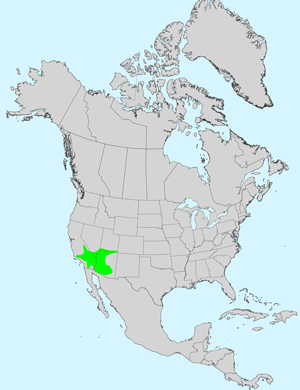
U.S. Weed Information: Unknown
Invasive/Noxious Weed Information: Unknown
Wetland Indicator: Unknown
Threatened/Endangered Information: Unknown
Genus Information: In North America there are 2 species and 4 accepted taxa overall for Acamptopappus. Worldwide, The Plant List includes 2 accepted species names with 1 infraspecific rank for Acamptopappus.
In the Southwestern United States, in Arizona and Utah there is 1 species of Acamptopappus, in California and Nevada there are 2 species, New Mexico and Texas have 0 species. All data approximate, subject to taxonomic changes.
The genus Acamptopappus was published by Asa Gray, (1810-1888) in 1873.There are 2 *varieties in Acamptopappus sphaerocephalus;
Acamptopappus sphaerocephalus var. hirtellus, Rayless Goldenhead; (AZ, CA, NV);
Acamptopappus sphaerocephalus var. sphaerocephalus, Rayless Goldenhead; (AZ, CA, NV, UT).
*Varieties sometimes occur together and intergrade.
Comments: Rayless Goldenhead is a southwestern species with a tendency or partiality of the majority of its populations toward the western geographic area of the Mojave Desert and some species extend north into the Great Basin Desert; it also is readily found in the Sonoran Desert.
For a comprehensive thoroughly documented review of Acamptopappus sphaerocephalus see the USDA; USFS Fire Effects Information System, or FEIS.
The genus Acamptopappus was published by Asa Gray, (1810-1888) in 1873.
The species epithet "sphaerocephalus" (sphaeroceph'alus:) from Greek meaning "sphere- or round-headed".
See complete listing of ethno-botanical uses at Native American Ethnobotany, University of Michigan, Dearborn.

